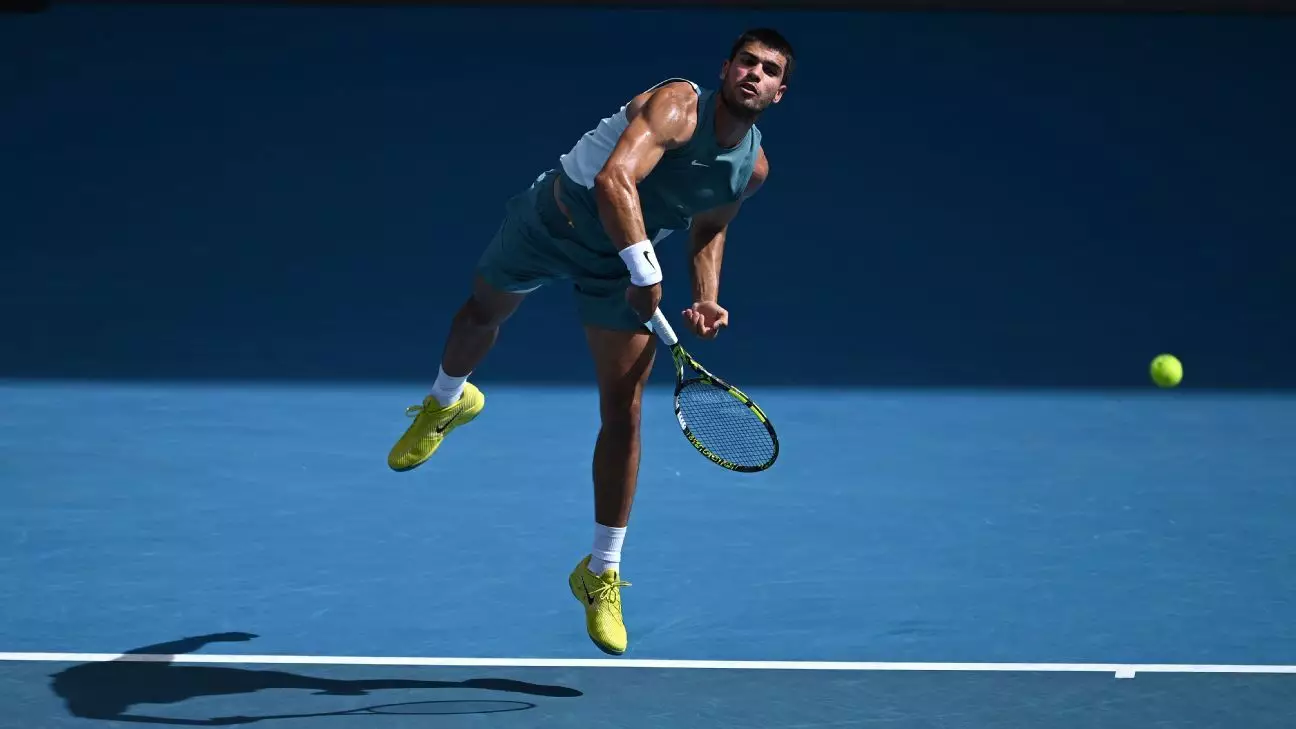In what can only be described as a moment of both triumph and melancholy, Carlos Alcaraz advanced to the quarterfinals of the Australian Open, marking his 10th career appearance at this pivotal stage in a Grand Slam. Achieving this feat before turning 22 years old aligns him with legends of the sport, including Bjorn Borg and Boris Becker, who also reached similar milestones in their early careers. As Alcaraz triumphed over Jack Draper, who was forced to retire after the second set due to injury, the Spanish sensation’s journey through the tournament has evoked a mix of admiration and concern, illustrating the volatile nature of sports.
Alcaraz began the match strong, racing to a commanding lead at 7-5, 6-1 before injury halted Draper’s pursuit. Despite his victory, Alcaraz expressed disappointment over the circumstances, emphasizing a sportsmanship perspective: “It’s not the way I want to win a match.” This sentiment not only reflects his humility but also illustrates an understanding of the grind and strain that fellow athletes endure in pursuit of excellence. Their planned offseason training together was dashed by Draper’s injury, highlighting the fragility of athletic careers in one of sport’s most punishing environments.
The Road Ahead and Tactical Preparation
Looking ahead, Alcaraz prepares to face either Novak Djokovic, the formidable 10-time Australian Open champion, or Jiri Lehecka, a rising talent seeded at 24. The excitement of potentially facing Djokovic promises to be an intriguing tactical engagement. Alcaraz, known for his analytical approach, stated his intentions to observe the matchup closely, highlighting his commitment to not just competing but also evolving as a player. The mental preparation that accompanies physical training is crucial, especially at this critical juncture in his career where he aims to secure an elusive Australian Open title for the first time.
As he continues to chase the coveted achievement of a career Grand Slam, Alcaraz’s understanding of strategy and opponent analysis will play a significant role in his success. His previous deep runs in other major tournaments, including title victories at Wimbledon and the US Open, have fostered a profound confidence in his abilities. Yet, the Australian Open has been a historic hurdle, with his best result so far being a quarterfinal appearance last year.
Tommy Paul’s Steady Ascent
While Alcaraz captures headlines, Tommy Paul’s straightforward 6-1, 6-1, 6-1 victory against Alejandro Davidovich Fokina showcases the intense drama of the tournament. Paul, seeded 12th, needed less than 90 minutes to dismantle his opponent, who had displayed tremendous resilience in previous matches but was clearly unable to sustain his physical condition against the American’s relentless play. Paul noted the remarkable nature of Davidovich Fokina’s recent comeback feats, signaling mutual respect within the fiercely competitive landscape of modern tennis.
With this victory, Paul secured a place in his third Grand Slam quarterfinal, building on last year’s semifinal run at the same event. His next challenge will either be against the well-established Alexander Zverev or Ugo Humbert, both formidable opponents in their own right. The pressure is undoubtedly on, but with his current form, Paul seems poised to advance further into the tournament.
As the Australian Open progresses, the narratives surrounding young talents like Alcaraz and Paul encapsulate a vibrant shifting landscape in men’s tennis. The juxtaposition of their experiences—Alcaraz’s strategic approach and Paul’s steady performance—illustrates the diverse paths athletes can take within elite competition. Both players exemplify resilience, skill, and the spirit of sportsmanship that permeates the tournament, no matter the outcome of their upcoming matches.
As tennis fans eagerly anticipate the next chapters of the Australian Open, the riveting engagement between physical prowess and mental agility remains at the forefront. The upcoming clashes promise to be thrilling, with emerging stars carrying the legacy of the sport forward as they seek to carve their own names in the annals of tennis history.

